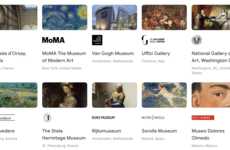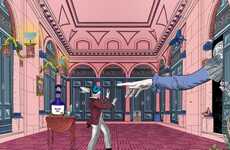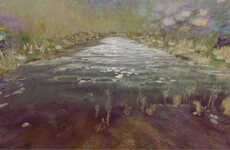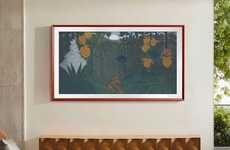
HTC's VIVE Arts Offers an Immersive Experience of 'Modigliani'
Laura McQuarrie — November 14, 2017 — Art & Design
References: tate.org.uk & blog.vive
HTC announced VIVE Arts as a new global virtual reality program that has the potential "to change the way the world creates and engages with the arts." In order to support the institutions that are already devoted to providing education and experiences based around the arts, HTC is partnering with London's Tate Modern for 'The Ochre Atelier: Modigliani VR Experience.'
The experience is based on the works of painter and sculptor Amedeo Modigliani and it is set to offer much more than an audio tour could on its own. For those who cannot make it to the museum for the experience, HTC is also offering it for at-home viewing on VIVEPORT.
The experience can be had for free, but those who wish to participate are asked to secure a ticket for the event.
The experience is based on the works of painter and sculptor Amedeo Modigliani and it is set to offer much more than an audio tour could on its own. For those who cannot make it to the museum for the experience, HTC is also offering it for at-home viewing on VIVEPORT.
The experience can be had for free, but those who wish to participate are asked to secure a ticket for the event.
Trend Themes
1. Virtual Reality in Art - The use of virtual reality technology in art exhibitions offers immersive and interactive experiences for viewers, enhancing traditional museum visits.
2. Collaborative Partnerships in VR - Partnerships between technology companies and museums create innovative virtual reality experiences that can be accessed by a global audience, expanding the reach of art education and engagement.
3. At-home Museum Experiences - The availability of virtual reality art experiences for at-home viewing provides convenient access to cultural content for individuals who are unable to visit museums in person.
Industry Implications
1. Virtual Reality - The virtual reality industry has the opportunity to create more immersive and interactive experiences for art exhibitions, revolutionizing the way people engage with art.
2. Technology - Incorporating virtual reality technology into the arts opens up new possibilities for collaboration and artistic expression, pushing the boundaries of traditional art forms.
3. Museums and Galleries - Museums and galleries can leverage virtual reality technology to enhance visitor experiences, attract new audiences, and extend the accessibility of their collections beyond physical locations.
4.7
Score
Popularity
Activity
Freshness























